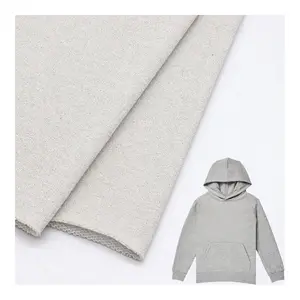Exploring the Versatility of 3D Knitted Fabric
The textile industry has been revolutionized by the introduction of 3D knitted fabric, a material that stands out for its innovative construction and versatile applications. This fabric is crafted using advanced knitting technology that allows for a three-dimensional structure, providing enhanced durability and a unique aesthetic appeal. The realm of 3D knit offers a plethora of options, from apparel to home furnishings, catering to a diverse range of needs.
Types and Applications of 3D Knit
3D knit fabrics are not just limited to one type of material. They encompass a variety of compositions including blends that are suitable for different applications. In the apparel sector, the adaptability of 3D knitted fabric makes it ideal for athletic wear, where the fabric's resilience and shape retention are paramount. Beyond clothing, this fabric's attributes are well-suited for outdoor gear, with certain variants offering water-resistant properties, making them perfect for jackets and protective outerwear. Additionally, the eco-conscious market can find solace in options made from recycled materials, aligning with sustainable practices.
Features and Materials
The construction of 3D knitted fabric involves a variety of materials, each contributing to the fabric's overall functionality. Polyester, known for its durability and ease of maintenance, is a common component of 3D knit fabrics. Innovations in textile technology have also led to the development of microfiber varieties, which are extensively used in cleaning products due to their superior absorbency and ability to trap dirt and dust.
Patterns, Textures, and Environmental Advantages
One of the most compelling aspects of 3D print knit fabrics is the vast array of patterns and textures available. This versatility allows for the creation of unique drapes, bedsheets, and tablecloths, each designed with specific textures that enhance both their visual and tactile appeal. The environmental benefits of 3D knit fabrics are also noteworthy, particularly with the availability of recycled options that contribute to a more sustainable textile industry.
Choosing the Right 3D Knitted Fabric
When selecting the appropriate 3d knitted fabric for your needs, it is essential to consider the specific attributes of the fabric. Whether you are in the market for materials that offer stretch and breathability for athletic wear or seeking water-resistant qualities for outdoor apparel, the expansive selection of 3D knit fabrics provides a solution for various requirements. The fabric's adaptability also extends to household items, where the microfiber variants are especially useful for cleaning applications.
In conclusion, the world of 3D knitted fabric is rich with possibilities. Its multifaceted nature makes it a sought-after choice for a wide range of products, offering both functional and environmental benefits. As the textile industry continues to evolve, the prominence of 3D knit fabrics is set to grow, marking its significance in both current and future market trends.







































 浙公网安备 33010002000092号
浙公网安备 33010002000092号 浙B2-20120091-4
浙B2-20120091-4